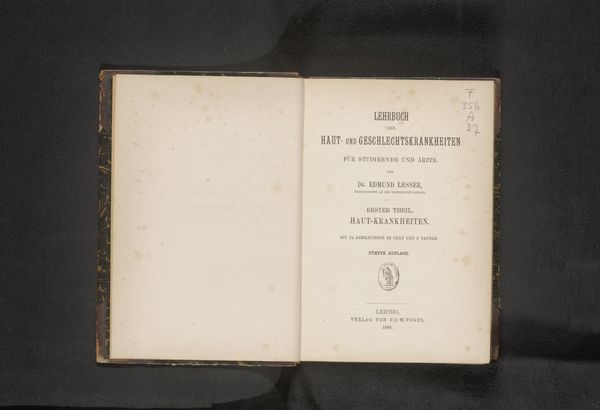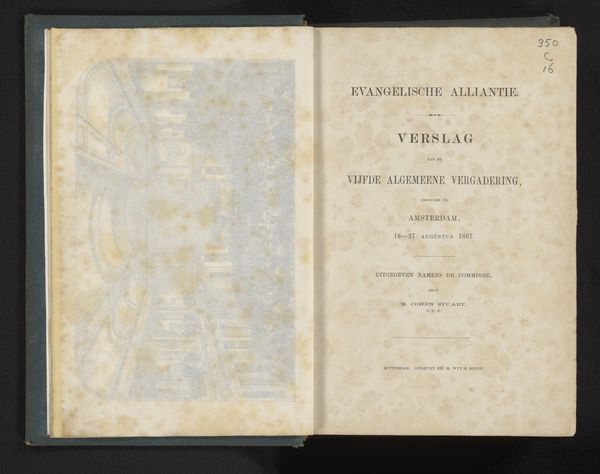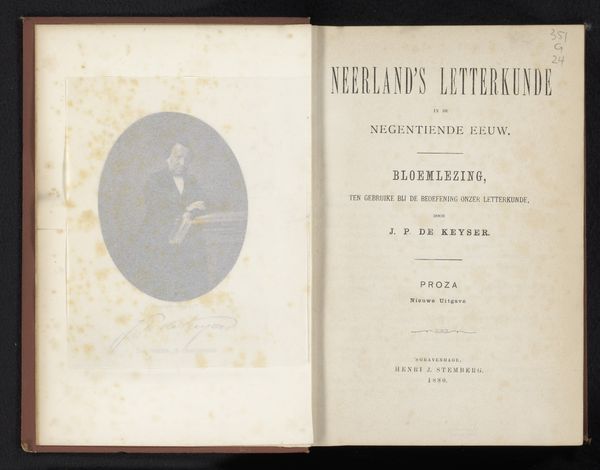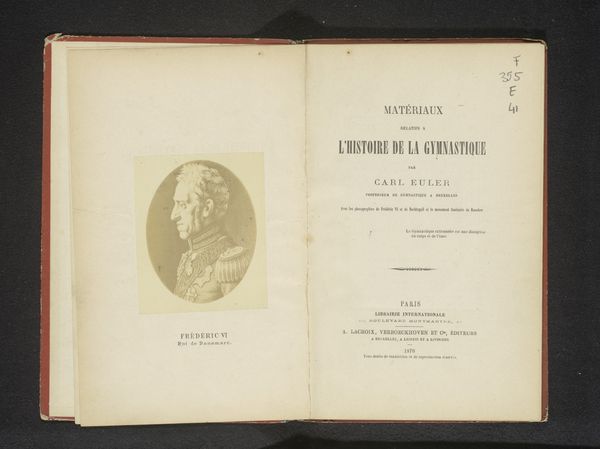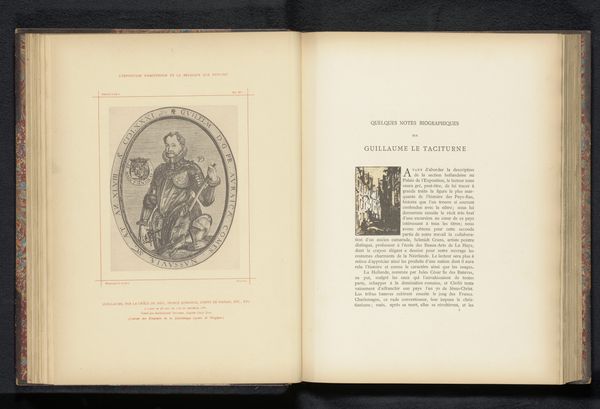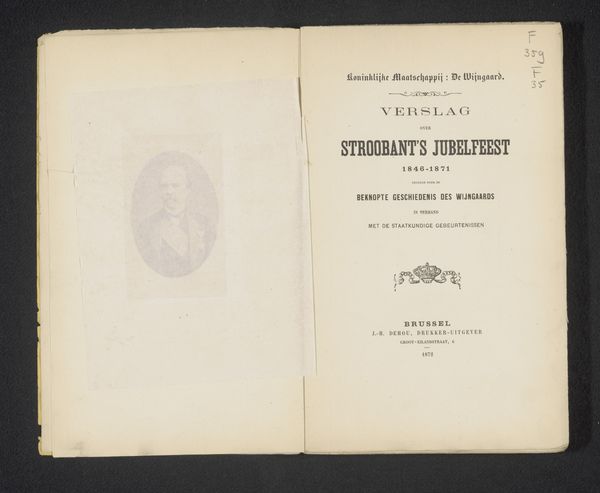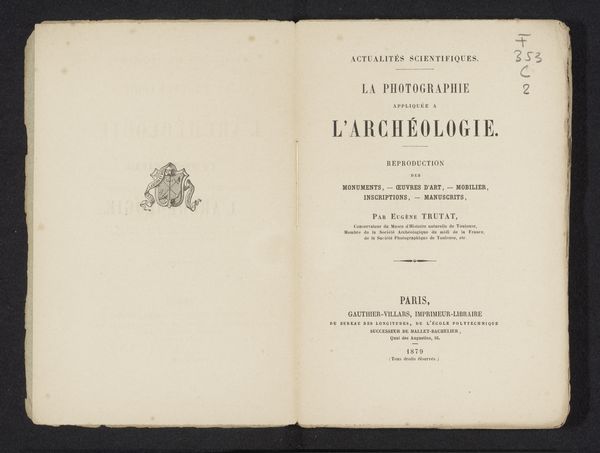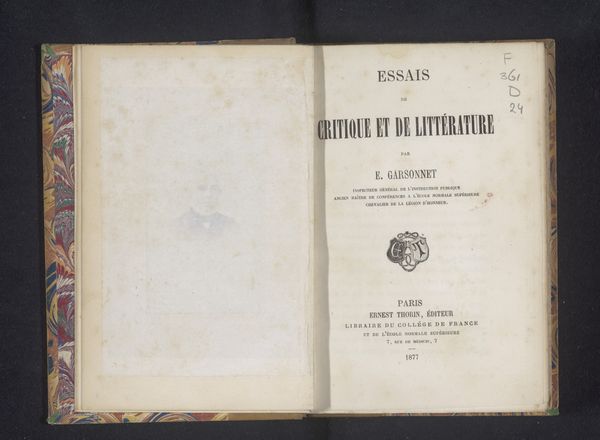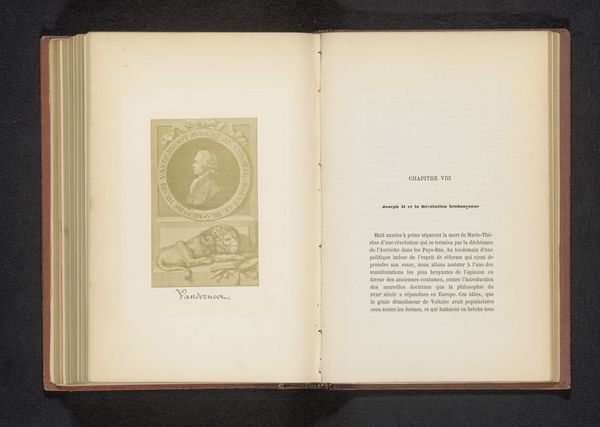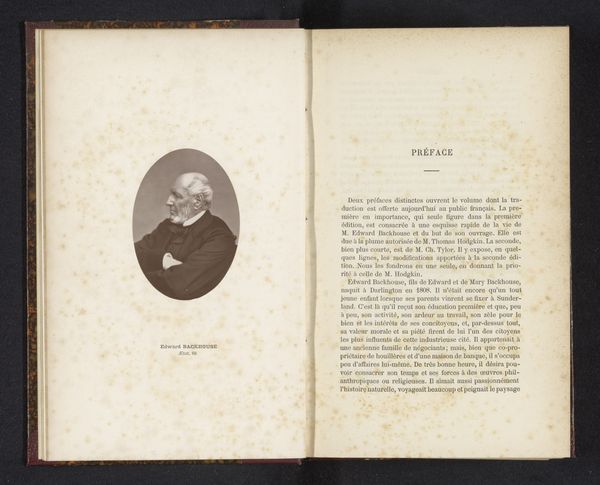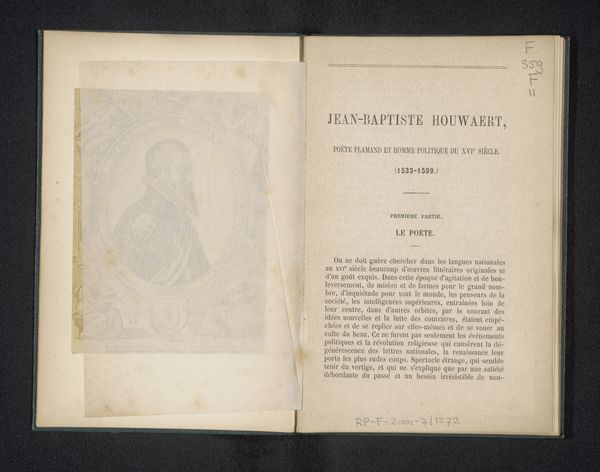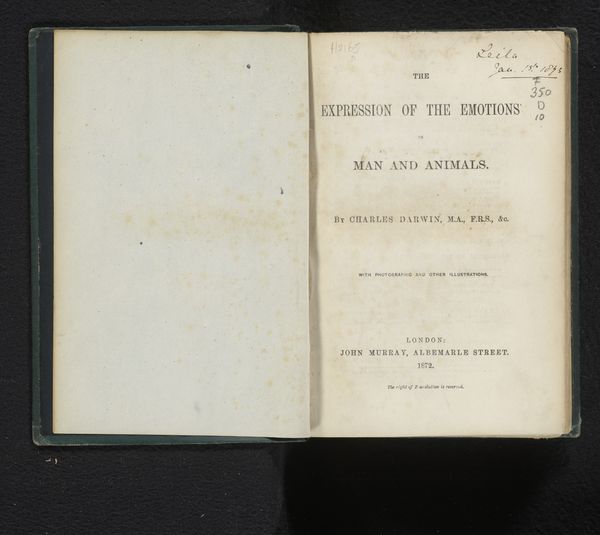
Memoirs of Henrietta Caracciolo, of the princes of Forino, ex-benedictine nun 1864
0:00
0:00
print, photography, albumen-print
#
portrait
# print
#
photography
#
genre-painting
#
albumen-print
Dimensions: height 182 mm, width 127 mm, thickness 32 mm
Copyright: Rijks Museum: Open Domain
Curator: Here we have a fascinating photographic print from 1864. It's the frontispiece to the published memoirs of Henrietta Caracciolo. Editor: It strikes me as immediately somber. That oval portrait exudes a very contained sorrow, doesn’t it? Even with the light tones, there’s an unmistakable gravity to her expression. Curator: Indeed. Photography during this period often adopted conventions from portrait painting. Notice how the oval frame isolates her, emphasizing her isolation and, perhaps, the boundaries placed upon her life as an ex-Benedictine nun. The white shawl-like garment that frames her face seems almost shroud-like in its starkness. Editor: Absolutely. And the title, "Memoirs of Henrietta Caracciolo... Ex-Benedictine Nun" – it tells us so much about the societal expectations and constraints placed on women, especially within religious orders, and the possible rebellion involved. We get a glimpse into her breaking from those conventions and choosing to record her own story. The very act of publishing a memoir was a statement in itself! Curator: Exactly! The printing of memoirs provided an outlet for expression that was uncommon for women within the church and royal structure. The photograph, albumen print to be precise, functions as an icon; an artifact for remembrance but also to give voice to unspoken stories, memories made public. Editor: It makes you wonder about the forces that prompted her to leave the order and then share her story. What pressures, what personal awakenings? What was life like for someone transitioning out of religious life in the 19th Century? Also, the added "of the princes of Forino," suggests high societal standing to fall from, yet what led her here? Curator: What draws my eye is how carefully this is composed—a carefully staged presentation, to a wide audience hungry for stories like hers. But the details surrounding the image like “publisher in ordinary to her majesty” shows the complicated intermixing of church, class, gender, and power. It begs deeper contemplation, wouldn’t you agree? Editor: Definitely. There is a certain tension contained within its borders; from the expression of its subject, to her positioning, to its method and placement of printing that allows our contemporary reflection of it all. Curator: A fascinating insight that leaves much for us to consider. Editor: Precisely, the piece is but an invitation to examine a singular life within complex times.
Comments
No comments
Be the first to comment and join the conversation on the ultimate creative platform.
